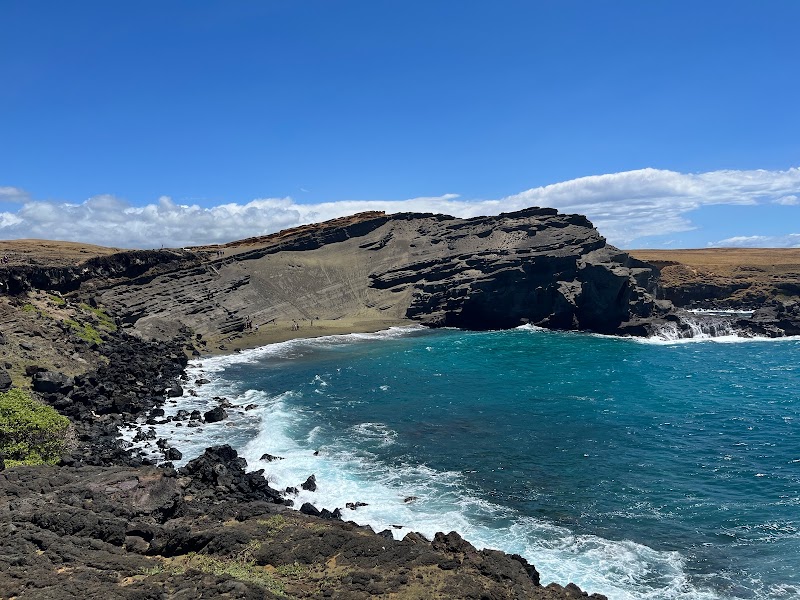
Papakōlea Green Sand Beach Adventures
Papakōlea Green Sand Beach is one of the rare green sand beaches in the world, offering a unique outdoor experience with its striking olive-colored sand and scenic ocean views.
About Papakōlea Green Sand Beach

Papakōlea Green Sand Beach, located near South Point on the Big Island of Hawaii, is famous for its distinctive green sand composed primarily of the mineral olivine. This geological wonder is a testament to volcanic activity, as the beach sits within a cinder cone that erupted approximately 50,000 years ago. Despite its seclusion, the beach is a popular attraction for adventurous travelers who enjoy its natural beauty and the challenge of accessing it. Hiking is the primary means to reach the beach, with a 2.5-mile trek from the nearest parking area. The beach is a unique ecosystem that provides a habitat for various coastal plant species and offers excellent opportunities for swimming, sunbathing, and photography. However, visitors should exercise caution due to the sometimes strong currents. The historical significance of the area is marked by its proximity to Ka Lae (South Point), known for its archaeological remains and as the southernmost point in the United States. Visitation to Papakōlea Green Sand Beach is not regulated by a formal park system, so conservation efforts focus on preserving its natural state and minimizing human impact.
Highlights
The unique olive-green sand made from olivine crystals.
Proximity to Ka Lae, the southernmost point in the U.S.
A scenic 2.5-mile hike offering breathtaking coastal views.
The opportunity to experience a rare geological feature.
Notable Natural Features
Olivine Sand
The green color of the sand is due to an abundance of the mineral olivine, a common crystal in Hawaiian volcanic regions.
Ka Lae (South Point)
Located near Papakōlea, it is the southernmost point in the United States with historical significance.
Majestic Coastal Views
Spectacular views of the Pacific Ocean can be enjoyed along the trail and at the beach.
